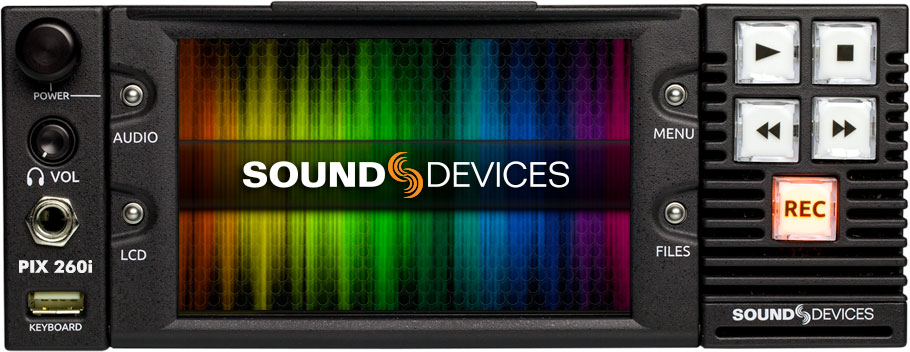News
Version 1.50 for the PIX 260i recorder
Firmware update v1.50 for the PIX 260i recorder is now available. PIX 260iSound Devices‘ PIX 260i recorder, which adds several enhancements for multi-drive video recording, audio and metadata editing.
Video enhancements
The latest version comes with a feature that allows you to control multiple recorders synchronously, either for recording or to use the play, stop and pause playback options.
Metadata editing has been greatly improved, with the ability to edit the scene, take, note or track name fields. This metadata can be modified on the current take (even during the recording of the take), the following takes or previous takes.
If we edit the scene or take metadata, the embedded bEXT/iXML metadata will be updated, as well as the file name when the “File Name Format” is set to “Reel-Scene-Take” or simply “Scene-Take”.
In addition, SID (SDI Source ID) metadata recording and playback has been introduced.
Finally, this version 1.50 has an updated method to prevent file corruption when there is a power failure during recording.
Audio enhancements
Continuing its track record in sound production, Sound Devices has equipped these recorders with the ability to record and playback 32 tracks of audio. Up to 32 channels can be accepted and transmitted via Ethernet using Audinate’s Dante.
In addition to 16 channels of embedded SDI audio and 8 channels of HDMI audio, the PIX 260i also accepts 8 channels of line-level analog audio I/O and another 8 channels of digital AES audio.
When selecting audio-only recording mode, we are offered an additional audio-specific view on the LCD screen that includes a metering system, file name, scene/take, timecode, ABS time, track names, simple rate, bit-depth and the time remaining on the storage disk.
Recording characteristics
The PIX 260i can capture Quicktime files in ProRes (up to ProRes 4444, 12-bit) or Avid DNxHD, which allow immediate editing in systems such as Media Composer, Final Cut or Premiere, which can be very beneficial in certain workflows.
Files are recorded simultaneously or sequentially on up to four separate disks, with two PIX-CADDY slots on the front panel and two eSATAp connections on the rear panel.
This capability for local or removable disk storage, along with the Ethernet file transfer function, streamlines workflow. The ability to burn to multiple disks provides instant backup, eliminating post-processing.
PIX-CADDY CF allows you to record audio files in WAV format (only in poly mode) directly to a CompactFlash card.
Another advantage of the PIX 260i recorder is that it can be controlled from computers and tablets. Once connected to a data network, navigation controls and menu settings are available on PIXNET for one or more recorders simultaneously.
This update is completely free for existing users and can be downloaded from this link.
If you want to learn more about recording formats and workflows, don’t miss the course on January 28th, 29th and 30th. Here is the link with all the information.



